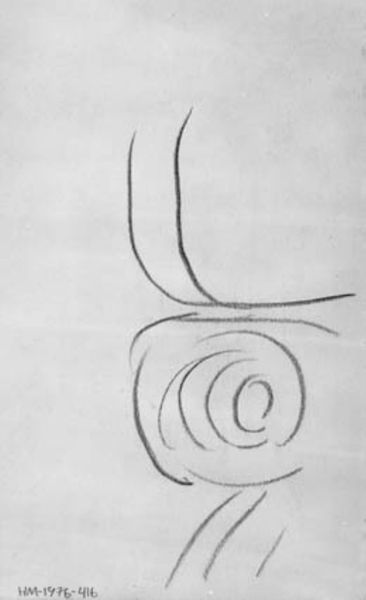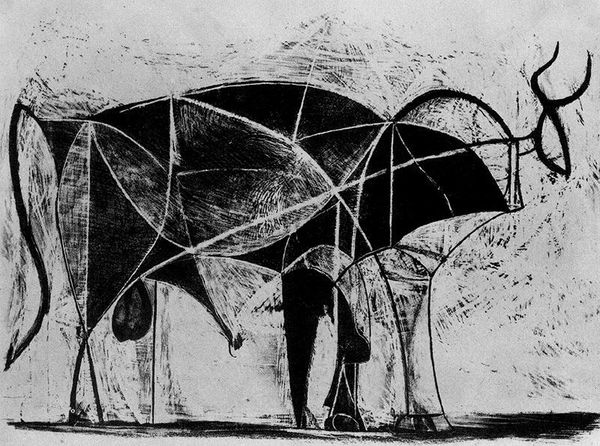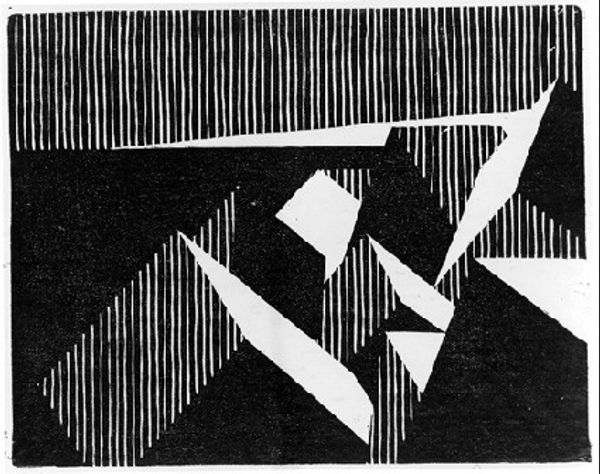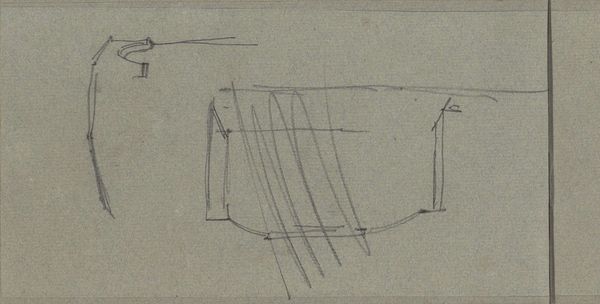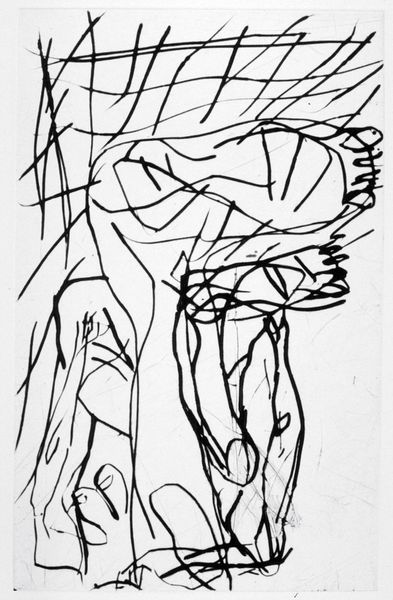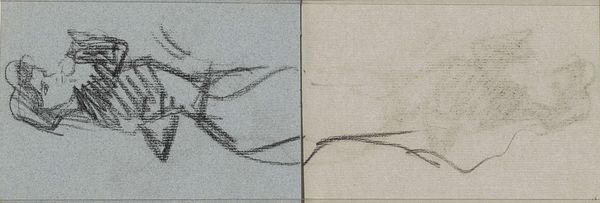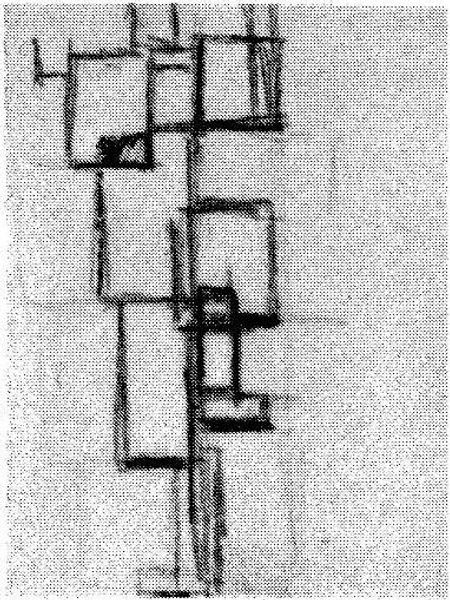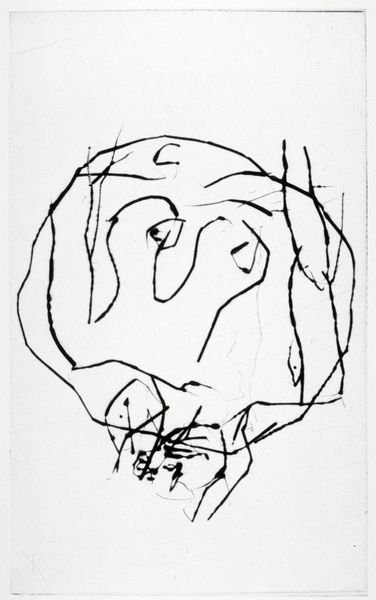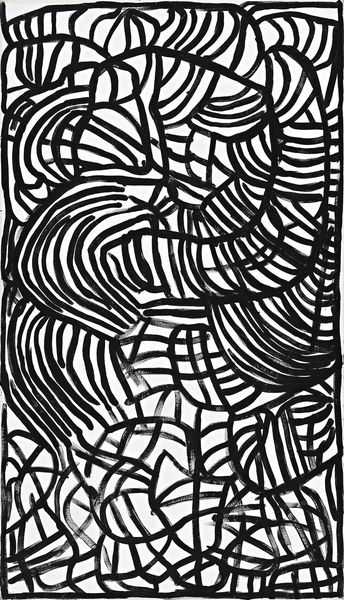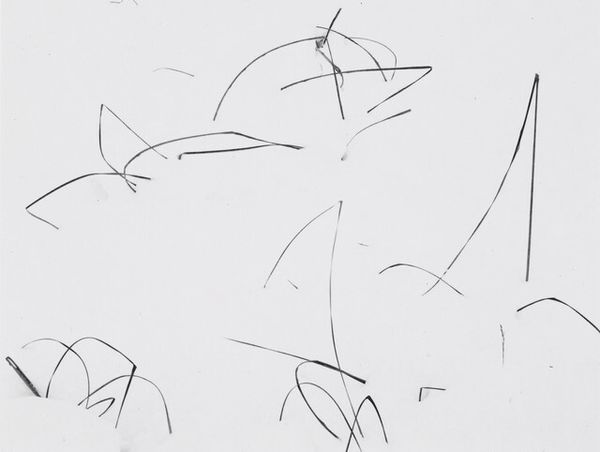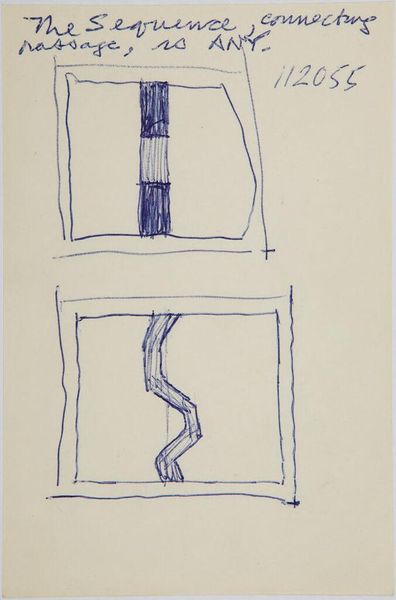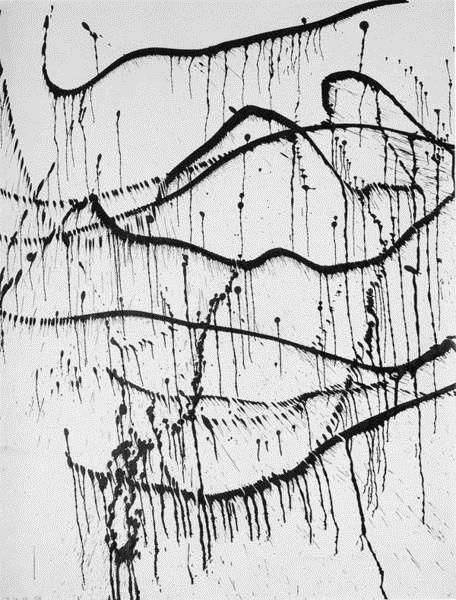
drawing, paper, ink
#
drawing
#
cubism
#
animal
#
figuration
#
paper
#
ink
#
abstraction
#
line
#
modernism
Copyright: Pablo Picasso,Fair Use
Curator: So, we're looking at Pablo Picasso's "Bull (plate X)," created in 1946. It’s ink on paper, a deceptively simple drawing that is part of a larger lithograph series housed here at MoMA. Editor: My first impression is one of stark reduction. He's stripped the bull down to its barest essence, a network of essential lines suggesting form and mass with remarkable economy. It almost feels brutal in its simplification. Curator: Brutal is an interesting choice of words. Picasso was deeply engaged with representing power, and of course, masculinity. How do you think this fits within that larger socio-political dialogue of the time, particularly in post-war Europe? Is this brute force or something else? Editor: It feels more like an excavation of form. Each line, each reduction, is a conscious choice. He's isolating the "bull-ness," if you will. I'm really drawn to the starkness of the ink, and the almost diagrammatic rendering. The way he plays with line, and how each mark informs another is very much connected to its production; we see the process itself laid bare. Curator: Absolutely, it embodies a concentrated study on what defines our perception and understanding of form. There is something very interesting about this specific print of the series. Here the lines create tension between representing the actual animal, versus an almost platonic ideal of a bull. What I also think of is the history of the bull as an aggressive force, particularly within Spanish culture itself and how Picasso is, perhaps, reconfiguring ideas about Spain. Editor: The simplification also points to mass reproducibility. These could be mass-produced images for widespread distribution, fitting within a socialist, democratic framework for art distribution and reception. It’s about democratizing form. What do you think the sparseness of the materials says about this accessibility? Curator: Absolutely, thinking about accessibility allows one to really delve into Picasso’s personal ideology. And perhaps how this connects with a lot of the radical artistic movements of the time in the West. He is reaching for everyone, or at least, that is what this aesthetic project proposes. It makes one wonder who he believed his audience to be? Editor: The material modesty of ink on paper clashes dramatically with the bravado typically associated with Picasso. It subverts expectations. Curator: I agree. It creates a productive tension that exposes so many layers within a supposedly 'simple' line drawing. Editor: It really highlights how simplification itself can be a complex, layered process, when one considers both its construction and possible contexts.
Comments
No comments
Be the first to comment and join the conversation on the ultimate creative platform.

